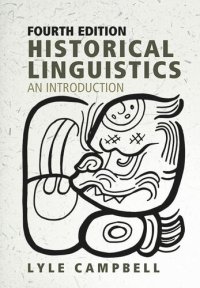
Ebook: Historical Linguistics: An Introduction
Author: Lyle Campbell
- Year: 2020
- Publisher: Edinburgh University Press
- Language: English
- pdf
An accessible, hands-on introduction to historical linguistics
The fourth edition features:
- A larger page format and refreshed layout for a more user-friendly experience
- 16 restructured and revised chapters, including new examples and exercises and new coverage on areas such as lexical and semantic change, historical corpus linguistics, historical sociolinguistics, and endangered languages and linguistic change
- Practical exercises and a full bibliography enable students to grasp and grow their understanding of historical linguistics
- Examples drawn from more familiar languages such as English, French, German and Spanish and from numerous non-Indo-European languages from all over the world present an international focus
- An electronic Instructor’s Manual is available to lecturers direct from EUP to support teaching - email marketing to get your copy
- A new preface which includes a guide to using the book and presents outline plans of possible organization for historical linguistics courses of different lengths
- Over 90 tables, figures and maps to clearly demonstrate key concepts, data and ideas
Are you interested in understanding language change? Do you want to know about the origins of words? Are you searching for explanations for what is unusual or weird in the languages you speak?
Lyle Campbell presents an accessible, hands-on introduction to historical linguistics – one that does not just talk about the topics, but through practical exercises and examples shows you how to apply the procedures, how to think about the issues and, in general, how to do what historical linguists do.
This 4th edition covers a wide range of topics including areal linguistics, linguistic prehistory, distant genetic relationships, language contact, lexical and semantic change, sociolinguistics and language change, quantitative and corpus research methods. Examples are drawn from a wide range of languages.
With its lucid and engaging style, expert guidance and comprehensive coverage, this book is ideal for students coming to historical linguistics for the first time.